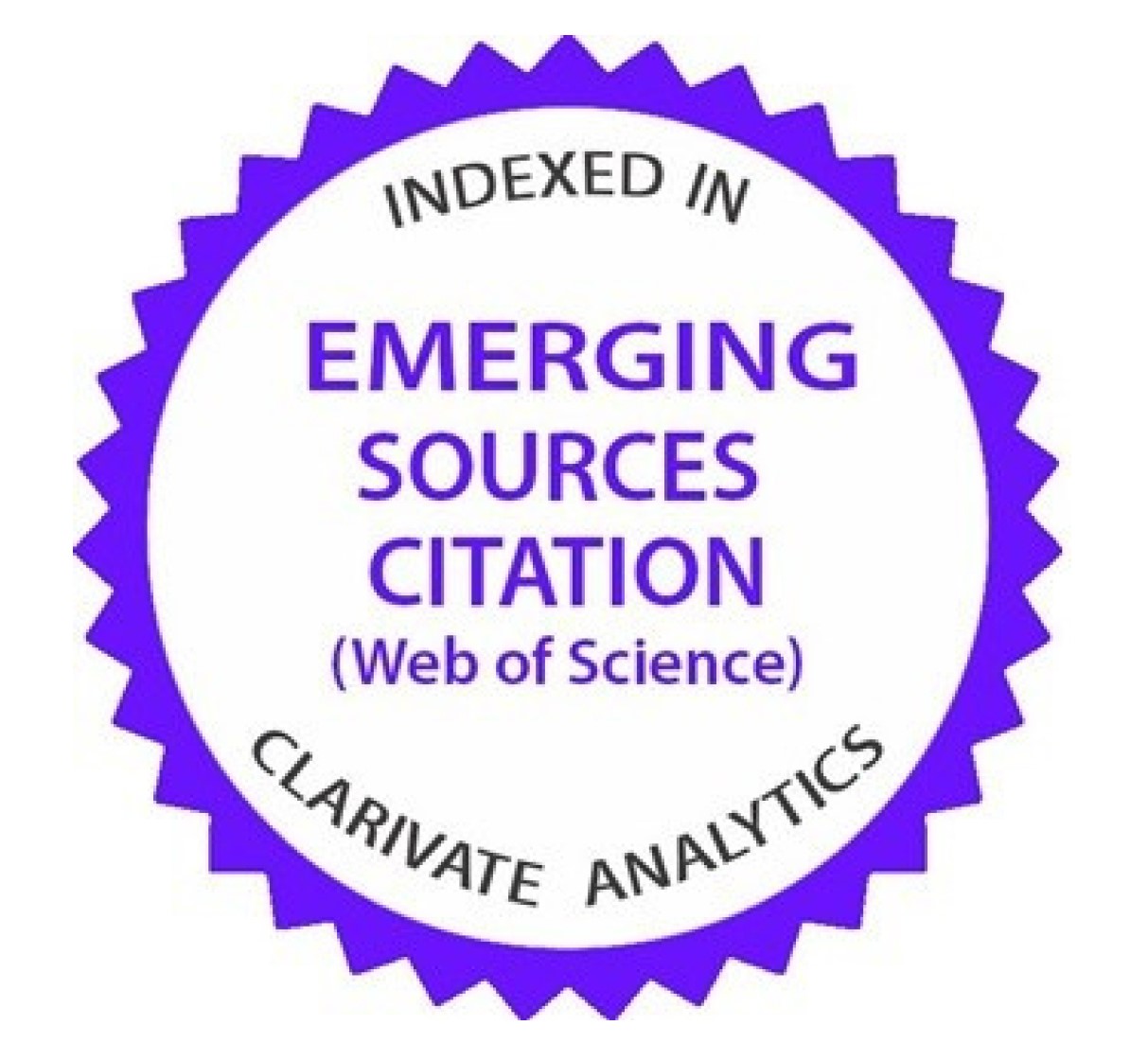Juvenile Delinquency in the European Union after the 2008 Financial Crisis
DOI:
https://doi.org/10.47741/17943108.218Keywords:
juvenile delinquent, economic cost, crimes against property, delinquent by age, criminal statisticsAbstract
Based on the financial analysis of crime, this article researches the role of age in crime rates after the 2008 financial crisis for a sample of 24 countries in the European Union (EU). To do so, a panel data model was established with fixed effects based on data from Eurostat. An empirical analysis was performed on the factors that influenced crime in the EU by adopting the least squares model. The results coincided with the existing literature: youth from 15 to 19 years of age are more likely to commit crimes and, as they age, their criminal activities decrease. This research is groundbreaking and contributes new results to the academic controversy on the influence of an economy’s condition on crime, since it confirms that deteriorating economic conditions are a factor that drives crime in the European Union, especially crimes against property.
Downloads
References
Altheimer, I. (2008). Social support, ethnic heterogeneity and homicide: A cross-national approach. Journal of Criminal Justice, 36 (2), 103-114. https://doi.org/10.1016/j.jcrimjus.2008.02.002
Altindag, D. T. (2012). Crime and unemployment: evidence from Europe”. International Review of Law and Economics, 32 (1), 145-157. https://doi.org/10.1016/j.irle.2011.10.003
Anderson, M. (2014). In school and out of trouble? The minimum dropout age and juvenile crime. Review of Economic and Statistics, 96 (2), 318-331. https://doi.org/10.1162/REST_a_00360
Andresen, M. A. (2013). Unemployment, business cycles, crime, and the Canadian provinces. Journal of Criminal Justice, 41 (4), 220-227. https://doi.org/10.1016/j.jcrimjus.2013.05.006
Andresen, M. (2015). Unemployment, GDP, and Crime: The Importance of Multiple Measurements of the Economy. Canadian Journal of Criminology and Criminal Justice, 57 (1), 35-58. https://doi.org/10.3138/CJCCJ.2013.E37
Arellano, M. (1987). Computing robust standard errors for within-groups estimators. Oxford Bulletin of Economics and Statistics, 49 (4), 431-434. https://doi.org/10.1111/j.1468-0084.1987.mp49004006.x
Aslund, O., Grönqvist, H., Hall, C. y Vlachos, J. (2018). Education and criminal behavior: Insights from an expansion of upper secondary school. Labour Economics, 52 (1), 178-192. https://doi.org/10.1016/j.labeco.2017.11.007
Baltagi, B.H. (2005). Econometric Analysis of Panel Data. (3rd Edition). New York:, John Wiley & Sons Inc., New York.
Blau, J. y Blau, P. M. (1982). The cost of inequality: Metropolitan structure and violent crime. American Sociological Review, 47 (1), 114-128. https://doi.org/10.2307/2095046
Buonanno, P. y Montolio, M. (2008). Identifying the socioeconomic and demographic determinants of crime across Spanish provinces. International Review of Law and Economics, 28 (2), 89-97. https://doi.org/10.1016/j.irle.2008.02.005
Buonanno, P. y Montolio, M. (2009). Juvenile crime in Spain. Applied Economics Letters, 16(5), 495- 500. https://doi.org/10.1080/13504850601018684
Becker, G. (1968). Crime and punishment: an economic approach. Journal of Political Economy, 76 (2), 169-217. https://doi.org/10.1086/259394
Billari, F. y Liefbroer, L. (2010). Towards a new pattern of transition to adulthood? Advances in Life Course Research, 15 (2-3), 59-75. https://doi.org/10.1016/j.alcr.2010.10.003
Bindler, A. y Hjalmarsson, R. (2017). Prisons, recidivism and the age-crime profile. Economics Letters, 152 (1), 46-49. https://doi.org/10.1016/j.econlet.2017.01.002
Cantor, D. y Land, K. C. (1985). Unemployment and crime rates in the post-World War II United States: a theoretical and empirical analysis. American Sociological Review, 50 (3), 317-332. https://doi.org/10.2307/2095542
Campistol, C. y Aebi, M. (2017). Are juvenile criminal justice statistics comparable across countries? A study of the data available in 45 European nations. European Journal on Criminal Policy and Research, 24 (1), 55-78. https://doi.org/10.1007/s10610-017-9345-2
Carmichael, F. y Ward, R. (2001). Male Unemployment and Crime in England and Wales. Economics Letters, 73 (1), 111-115. https://doi.org/10.1016/S0165-1765(01)00466-9
Fajnzylber, P., Lederman, D. y Loayza, N. (2002). Inequality and violent crime. Journal of Law and Economics, 45(1), 1-40. https://doi.org/10.1086/338347
Farrington, D. (1986). Age and crime. Crime and Justice, 7 (1), 189-250. https://doi.org/10.1086/449114
Fernández-Molina, E. y Bartolomé Gutiérrez, R. (2018). Juvenile crime drop: What is happening with youth in Spain and why? European Journal of Criminology, 17 (3), 1-26. https://doi.org/10.1177/1477370818792383
Fougère, D., Kramarz, F. y Pouget, J. (2009). Youth Unemployment and Crime in France. Journal of European Economic Association, 7 (5),: 909-938. https://doi.org/10.1162/JEEA.2009.7.5.909
Glaeser, E. L. y Sacerdote, B. (1999). Why is there more crime in cities? Journal of Political Economy, 107 (S6), S225-258. https://doi.org/10.1086/250109
Grogger, J. (1998). Market wages and youth crime. Journal Labor Economics, 16 (4), 756-791. https://doi.org/10.1086/209905
Hsiao, C. (2003). Analysis of Panel Data. Cambridge: Cambridge. University Press., Cambridge. https://doi.org/10.1017/CBO9780511754203
Hsiao, C. y Sun, B.H. (2000). To Pool or Not to Pool Panel Data, Panel Data Econometrics: Future Directions, (Papers in Honor of Professor Pietro Balestra,, edited by J. Krishnakumar and E. Ronchetti). Amsterdam: North Holland.
Jacob, B. y Lefgren, L. (2003). Are idle hands the devil’s workshop? Incapacitation, concentration and juvenile crime. American Economic Review, 93 (5), 1560-1577. https://doi.org/10.1257/000282803322655446
Jacobs, D. y Richardson, A. M. (2008), Economic Inequality and Homicide in the Developed Nations From 1975 to 1995. Homicide Studies, 12(1), 28-45. https://doi.org/10.1177/1088767907311849
Janko, Z. y Popli, G. (2015). Examining the link between crime and unemployment: a time-series analysis for Canada. Applied Economics, 47(37), 4007-4019. https://doi.org/10.1080/00036846.2015.1023942
Kennedy, L. W. y Forde, D. R. (1990). Routine activities and crime: An analysis of victimization in Canada. Criminology, 28 (1), 137-152. https://doi.org/10.1111/j.1745-9125.1990.tb01321.x
Lafree, G. (1999). A summary and review of crossnational comparative studies of homicide, in M. Smith and M. Zahn (Eds.), Homicide: A sourcebook of social research. Thousand Oaks, CA: Sage.
Landersø, R., Nielsen, H. y Simonsen, M. (2017). School Starting Age and the Crime-age Profile. The Economic Journal, 127 (602), 1096-1118. https://doi.org/10.1111/ecoj.12325
Lin, M. J. (2007). Does democracy increase crime? The evidence from international data. Journal of Comparative Economics, 35(1), 467-483. https://doi.org/10.1016/j.jce.2007.06.001
Lin, M. J. (2008). Does Unemployment Increase Crime? Evidence from US Data 1974-2000. Journal of Human Resources, 43 (2), 413-436. https://doi.org/10.1353/jhr.2008.0022
Loeber, R., Farrington, D. y Redondo Illescas, S. (2011). La transición desde la delincuencia juvenil a la delincuencia adulta. Revista Española de Investigación Criminológica, 1(9), 1-41.
Lochner, L. (2004). Education, work and crime: A human capital approach. International Economic Review, 45 (3), 811-843. https://doi.org/10.1111/j.0020-6598.2004.00288.x
Lochner, L. y Moretti, M. (2004). The Effect of Education on Crime: Evidence from Prison Inmates, Arrests, and Self-Reports. American Economic Review, 94 (1), 155-180. https://doi.org/10.1257/000282804322970751
Luallen, J. (2006). School’s Out... Forever: A Study of Juvenile Crime, At-Risk Youths and Teacher Strikes. Journal of Urban Economics, 59 (1), 75-103. https://doi.org/10.1016/j.jue.2005.09.002
McCall, P. y Nieuwbeerta, P. (2007). Structural Covariates of Homicide Rates. A European City Cross-National Comparative Analysis. Homicides Studies, 11 (2), 167-188. https://doi.org/10.1177/1088767907304072
Montero Soler, A. y Torres López, J. (1998). La economía del delito y de las penas. Un análisis crítico. España: Comares, España.
Min, I. S. y Choi, P. S. (2009). Panel data analysis. Seoul, South Korea: The Korea Association of STATA.
Öster, A. y Agell, J. (2007). Crime and unemployment in turbulent times. Journal of the European Economic Association, 5 (4), 752-775. https://doi.org/10.1162/JEEA.2007.5.4.752
Ouimet, M. (2012). A World of Homicides: The Effect of Economic Development, Income Inequality, and Excess Infant Mortality on the Homicide Rate for 165 Countries in 2010. Homicide Studies, 16 (3), 238-258. https://doi.org/10.1177/1088767912442500
Phillips, J. y Land, K. (2012). The Link between Unemployment and Crime Rate Fluctuations: An Analysis at the County, State, and National Levels. Social Science Research, 41 (3), 681-694. https://doi.org/10.1016/j.ssresearch.2012.01.001
Raphael, S. y Winter-Ebmer, R. (2001). Identifying the effect of unemployment on crime. Journal of Law and Economics, 44 (1), 259-284. https://doi.org/10.1086/320275
Roberts, A. y Willits, D. (2015). Income Inequality and Homicide in the United States: Consistency Across Different Income Inequality Measures and Disaggregated Homicide Types. Homicide Studies, 19 (1), 28-57. https://doi.org/10.1177/1088767914557811
Saridakis, G. y Spengler, H. (2012). Crime, deterrence and unemployment in Greece: A panel data approach. The Social Science Journal, 49 (2), 167-174. https://doi.org/10.1016/j.soscij.2011.08.005
Strat, V.A., Davidescu, A. A., Grosu, R. M. y Zgura, I. D. (2016). Regional Development Fueled by Entrepreneurial Ventures Providing KIBS - Case Study on Romania. Amfiteatru Economic Journal, 18 (41), 55-72.
Wadsworth, T. (2010). Is immigration responsible for the crime drop? An assessment of the influence of immigration on changes in violent crime between 1990 and 2000. Social Science Quarterly, 91(2), 531-553. https://doi.org/10.1111/j.1540-6237.2010.00706.x
Wilkinson, R. (2004). Why Is Violence More Common where Inequality Is Greater? Annals of the New York Academy of Sciences, 1036 (1), 1-12. https://doi.org/10.1196/annals.1330.001
Wilkinson, R. y Pickett, K. (2019). The Inner Level: How More Equal Societies Reduces Stress, Restore Sanity and Improve. Madrid: Capitan Swing: Madrid.
Wirth, L. (1938). Urbanism as a way of life. American Journal of Sociology, 44 (1), 1-24. https://doi.org/10.1086/217913
Witte, A. D. (2002). Crime causation: economic theories., Iin Encyclopedia of Crime and Justice. New York: MacMmillan. Reference USA, New York.
Wooldridge, J.M. (2002). Econometric Analysis of Cross Section and Panel Data. Cambridge, MA: MIT Press., Cambridge, MA.
Wu, D. y Wu, Z. (2012). Crime, inequality and unemployment in England and Wales. Applied Economics, 44 (29), 3765-3775. https://doi.org/10.1080/00036846.2011.581217
Published
How to Cite
Issue
Section
License
Licencia creative commons CC BY NC ND https://creativecommons.org/licenses/by-nc-nd/2.0/















